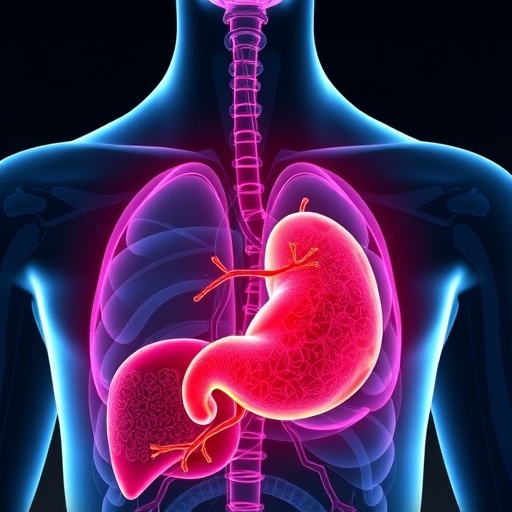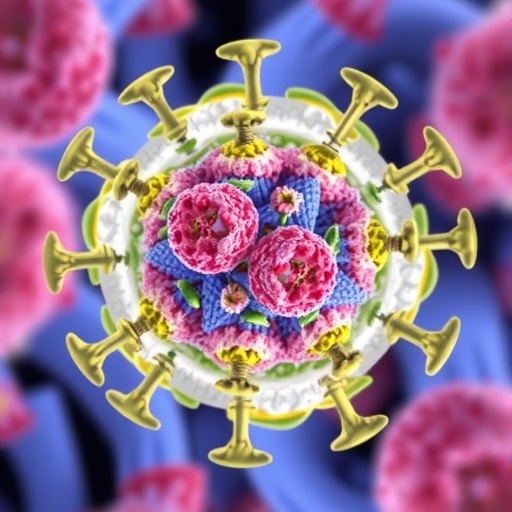
Hepatocellular carcinoma (HCC), ranking as the third leading cause of cancer-related deaths worldwide, is intimately linked with chronic liver disease, particularly advanced liver fibrosis and cirrhosis. Over 80% of HCC cases evolve within a microenvironment characterized by extensive scarring and tissue remodeling, where the interplay between damaged liver cells and fibrotic components creates a fertile ground for malignant transformation. Recent comprehensive analyses published in Hepatology International elucidate the complex biological pathways that underpin the transition from hepatic fibrosis to carcinoma, identifying key cellular players and molecular mechanisms that drive this deadly progression.
Central to the fibrosis-to-cancer axis are hepatic stellate cells (HSCs), resident pericytes of the liver that, upon activation by chronic insults such as viral hepatitis or excessive alcohol consumption, transdifferentiate into myofibroblast-like cells. Activated HSCs are primarily responsible for the excessive deposition of extracellular matrix (ECM) components, forming the dense scar tissue characteristic of fibrosis. However, their role extends far beyond simple scar production. These cells secrete a broad range of bioactive molecules, including vascular endothelial growth factor (VEGF) and angiopoietin-1 (Ang-1), which enhance tumor angiogenesis and fuel the growth of neoplastic cells.
Importantly, activated HSCs contribute to immune modulation within the tumor microenvironment. Through the expression of immune checkpoint molecules such as programmed death-ligand 1 (PD-L1), they suppress immune surveillance mechanisms that would otherwise recognize and eliminate emerging cancer cells. This immunosuppressive milieu effectively cloaks pre-malignant and malignant cells from cytotoxic T lymphocytes, facilitating unchecked tumor progression. Additionally, HSCs undergo phenotypic transformation into cancer-associated fibroblasts (CAFs), a heterogeneous population that further modifies the ECM and secretes mitogenic and pro-inflammatory factors, thereby accelerating hepatocellular carcinoma malignancy.
.adsslot_ZTO6WCgH5m{width:728px !important;height:90px !important;}
@media(max-width:1199px){ .adsslot_ZTO6WCgH5m{width:468px !important;height:60px !important;}
}
@media(max-width:767px){ .adsslot_ZTO6WCgH5m{width:320px !important;height:50px !important;}
}
ADVERTISEMENT
At the molecular level, dysregulation of multiple signaling pathways orchestrates the fibrogenic and oncogenic programs in the liver. The TGF-β-Smad pathway, a canonical driver of fibrosis, induces epithelial-to-mesenchymal transition (EMT), enabling epithelial hepatocytes to acquire invasive, mesenchymal characteristics. Concurrently, activation of the NF-κB pathway supports a chronic inflammatory state that fosters genetic instability and cell survival. Wnt/β-catenin signaling, frequently amplified in HCC, promotes proliferation and stemness of liver cancer cells. The remodeling of the ECM not only provides structural support for tumor expansion but also modulates cellular signaling, mechanotransduction, and biochemical gradients that sculpt the tumor niche.
Mitochondrial dysfunction, emerging as a critical feature of the fibrotic liver, contributes to oxidative stress and metabolic reprogramming conducive to cancer initiation. Damaged mitochondria release reactive oxygen species (ROS) that cause DNA damage, while alterations in mitochondrial metabolism favor bioenergetic flexibility necessary for cancer cells under hypoxic conditions. Epigenetic modifications, including DNA methylation and histone alterations, further refine gene expression patterns that lock hepatocytes into malignant phenotypes. In parallel, shifts in the immune microenvironment, such as expansion of tumor-associated macrophages and regulatory T cells, perpetuate immune evasion and tumor tolerance.
Despite the complexity of these intertwined mechanisms, co-author Dr. Peng Luo of Southern Medical University emphasizes that the fibrosis-to-cancer transition is not an inexorable fate. By targeting the activation state of HSCs or disrupting immune checkpoint pathways that enable immune evasion, therapeutic interventions can intercept the cascade of events culminating in hepatocellular carcinoma. Such strategies herald a paradigm shift towards early interception rather than late-stage treatment of liver cancer.
Emerging diagnostic technologies hold promise for earlier detection and improved prognosis in patients at risk of HCC. Liquid biopsy approaches, analyzing circulating tumor DNA and exosomes, offer minimally invasive means to detect molecular signatures of tumorigenesis before clinically apparent lesions develop. These techniques could revolutionize surveillance in chronic liver disease, enabling timely intervention and personalized therapeutic strategies.
Therapeutically, novel agents that selectively target cancer-associated fibroblasts are gaining traction. Fibroblast activation protein (FAP) inhibitors and chimeric antigen receptor T (CAR-T) cells designed to recognize and eliminate CAFs disrupt the supportive tumor stroma, attenuating tumor growth and invasiveness. By dismantling the pro-tumor microenvironment, these modalities complement direct tumor-targeting treatments and may overcome resistance mechanisms entrenched in the fibrotic niche.
Combination therapies that simultaneously abrogate fibrogenic drivers and amplify anti-tumor immunity emerge as particularly potent strategies. Immune checkpoint inhibitors, which have revolutionized oncology, show enhanced efficacy when paired with agents that reduce fibrosis and ECM stiffening, thereby allowing immune effector cells to infiltrate tumors more effectively. Modulating the fibrotic microenvironment thus represents a critical adjunct to immunotherapy in HCC.
The urgency of these findings is underscored by the grim clinical reality: while liver fibrosis remains reversible to some extent, once hepatocellular carcinoma develops, patient survival rates plummet dramatically. Understanding the molecular checkpoints governing fibrosis progression and malignant transformation therefore offers actionable targets for preventive therapeutics and better clinical outcomes.
Future research directions must focus on intricate cell-to-cell communications within the hepatic microenvironment, integrating single-cell transcriptomics, proteomics, and spatial biology to unravel fibroblast heterogeneity and immune cell dynamics. Such multi-omics approaches promise to identify novel biomarkers and therapeutic targets, tailoring interventions to the nuanced landscape of individual patients.
In the battle against hepatocellular carcinoma, this expanding knowledge of the fibrosis-cancer axis positions the scientific and medical community on the cusp of transformative breakthroughs. By intercepting disease progression at the nexus of chronic fibrosis and oncogenesis, it may soon be possible to dramatically reduce the global burden of this lethal cancer, offering renewed hope to millions worldwide.
Subject of Research: Not applicable
Article Title: Decoding the hepatic fibrosis-hepatocellular carcinoma axis: from mechanisms to therapeutic opportunities.
News Publication Date: 1-Jul-2025
Web References: http://dx.doi.org/10.1007/s12072-025-10838-y
References: Authors declare no competing interests
Keywords: Cancer, Liver
Tags: angiogenesis in hepatocellular carcinomacancer-related liver diseasechronic hepatitis and liver cancerchronic liver disease complicationsextracellular matrix in cancerfibrosis and neoplastic transformationhepatic stellate cells in liver diseasehepatocellular carcinoma researchimmune modulation in liver tumorsliver fibrosis to cancer progressionmolecular mechanisms of liver cancertumor microenvironment and fibrosis





